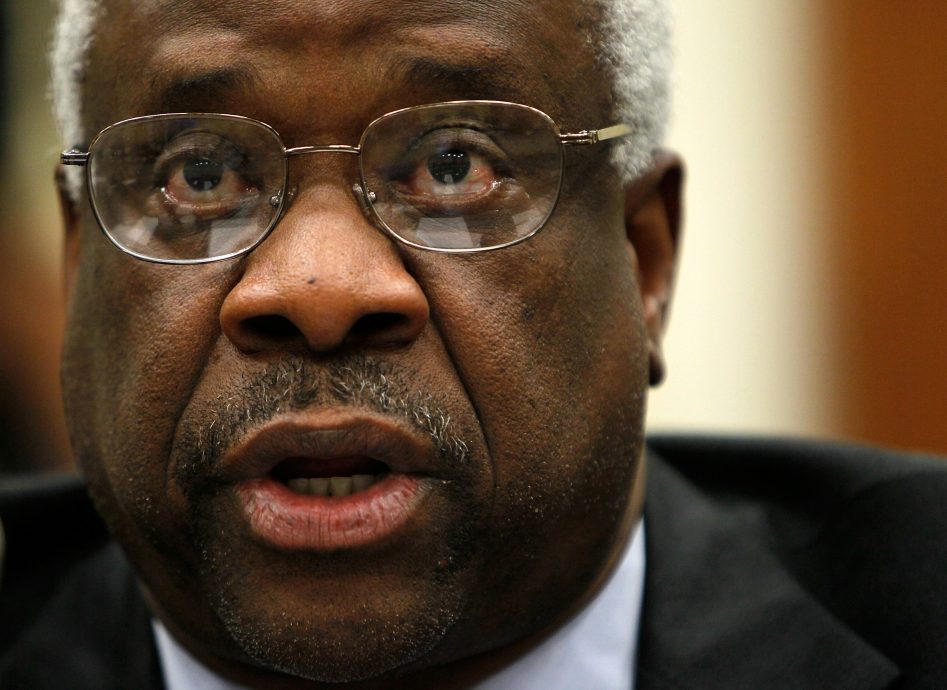Revisiting New York Times v. Sullivan with Justice Thomas
Justice Thomas used a recent cert denial to suggest the Supreme Court revisit its decision in the 1964 case New York Times v. Sullivan. In the case, the Court held the First Amendment prohibited damages to public figures for defamation unless the false, defamatory statement resulted from “actual malice,” meaning it was published “with knowledge that it was false or with reckless disregard of whether it was false or not.”
A couple of thoughts on Justice Thomas’s opinion and on the original case.
The problem with the original case is not the need to balance policy interests protecting the reputations of “public figures” relative to the chilling effect that the mere threat of litigation can have even on the publication of truthful speech. The problem is deciding which branch of government is most appropriate to weigh those interests in relation to one another, the judiciary or the legislature.
One can agree entirely with the policy decision represented in New York Times v. Sullivan while believing the decision should be overturned because decisions of those sort should be made by legislators rather than by judges. As Thomas wrote in his decision, “New York Times and the Court’s decisions extending it were policy-driven decisions masquerading as constitutional law.”
A judge or justice agreeing with Thomas could vote to overturn the decision in New York Times, resign from the bench to run for the legislature, then, as a legislator, vote for a bill that would adopt the same standard the legislator voted against as a judge. There would be no contradiction in the person’s behavior. What is an appropriate decision for a legislator to make is not necessarily an appropriate decision for a judge to make.
Secondly, discussion of the decision New York Times often gets framed in terms most favorable to the press: Its role in communicating information vital to democratic decision making and the desire to avoid self-censorship on the part of the media.
Framing the case around the protection of unprofessional behavior on the part of journalists reduces the romantic picture of the media painted by the Court.
To be sure, the decision does allow recovery of damages for false, defamatory statements published with the knowledge they were false or published with reckless disregard for their truthfulness. What this standard protects, however, is the publication of false, defamatory statements that resulted from negligence. Merely negligent behavior is still unprofessional behavior even though it does not rise to the level of “reckless” behavior on the culpability scale.
Negligence is “a failure to behavior with the level of care that someone of ordinary prudence would have exercised under the same circumstances.” A journalist who negligently defamed an individual would be protected under the standard announced in New York Times even though the journalist failed to exercise that degree of care a journalist of ordinary prudence would have exercised under the same circumstances. The decision immunizes unprofessional behavior from legal liability irrespective of the substantial damage the reporting of false, defamatory statements that unprofessional behavior might cause to a public official.
In reading the original case one gets the image of small-town newspapers taking on the deep-pocketed Mr. Potters of the world. (Recall Mr. Potter is the villain in the Jimmy Stewart film, It’s a Wonderful Life.)
Yet with the significant increase in market concentration that has occurred in the media over the last generation, the accuracy of this picture is questionable. The media are often the deep-pocketed parties in these disputes rather than the government officials.
Further, the publication of salacious stories is one means by which the media attract readers and viewers, and thereby command higher advertising or subscription rates. Legally protecting unprofessional journalistic behavior of profit-making businesses in today’s media environment arguably invites a different balancing of interests than it did in 1964.
There is the additional question of how the decision relates to the type of person willing to get involved in government in the U.S. The notion politicians are fair game for defamation as long as the false statements are not published with “actual malice” can’t help but deter some decent individuals otherwise from exposing themselves to this sort of treatment, at least at the margin. I am unsure we have so many of these types of politicians in government in the first place to deter them by privileging negligent defamation from recovery.
None of this is to suggest that legislatures would necessarily balance interests any differently than the Court did in New York Times. And there is concern legislators might see themselves desiring to file these actions against the media more than judges do, and so legislatively balance interests with a self-interested thumb on the scale relative to judges. Irrespective, Thomas is correct that the policy decision of the U.S. Supreme Court in New York Times reflects a legislative accommodation between the different interests. And legislative decisions should be made by legislators, not by judges.


